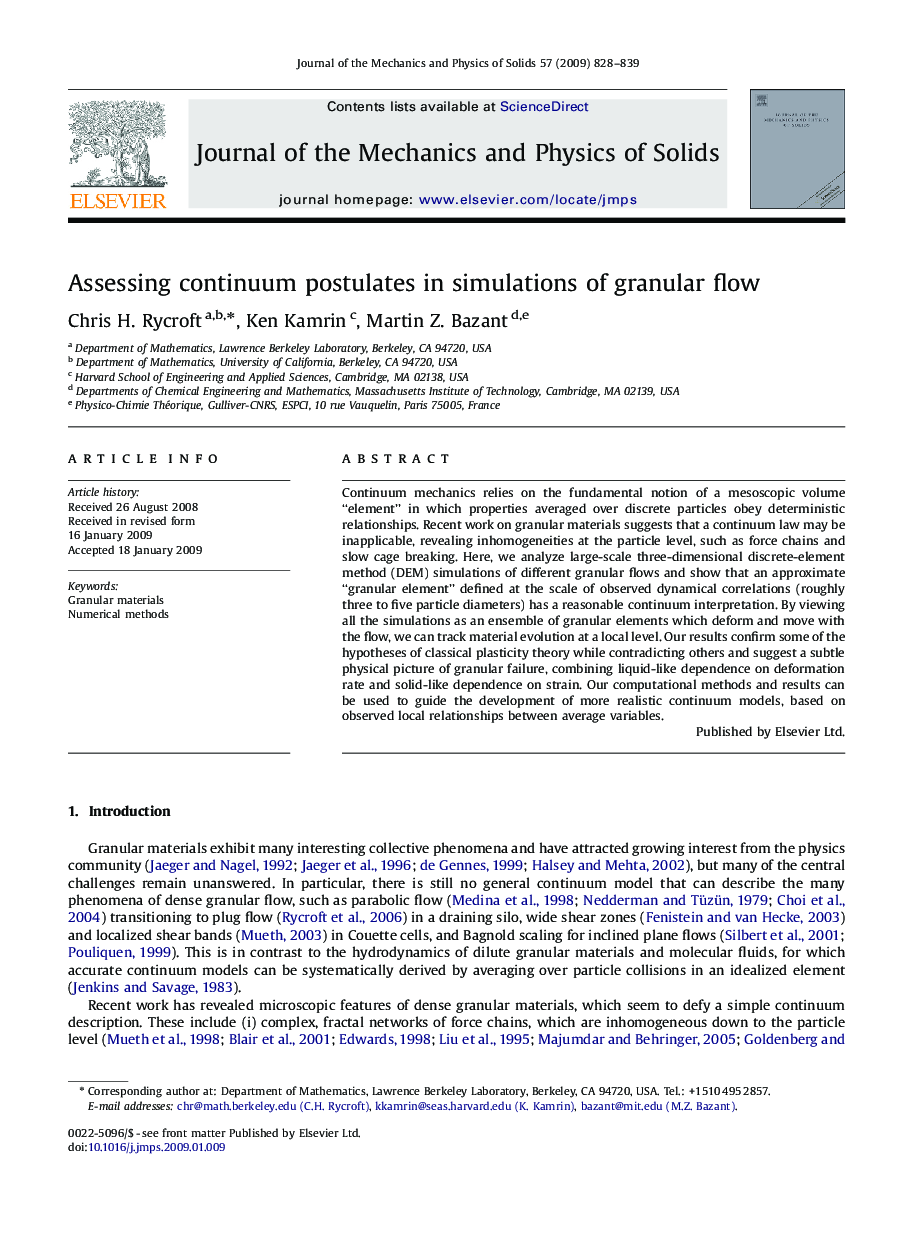| Article ID | Journal | Published Year | Pages | File Type |
|---|---|---|---|---|
| 799859 | Journal of the Mechanics and Physics of Solids | 2009 | 12 Pages |
Continuum mechanics relies on the fundamental notion of a mesoscopic volume “element” in which properties averaged over discrete particles obey deterministic relationships. Recent work on granular materials suggests that a continuum law may be inapplicable, revealing inhomogeneities at the particle level, such as force chains and slow cage breaking. Here, we analyze large-scale three-dimensional discrete-element method (DEM) simulations of different granular flows and show that an approximate “granular element” defined at the scale of observed dynamical correlations (roughly three to five particle diameters) has a reasonable continuum interpretation. By viewing all the simulations as an ensemble of granular elements which deform and move with the flow, we can track material evolution at a local level. Our results confirm some of the hypotheses of classical plasticity theory while contradicting others and suggest a subtle physical picture of granular failure, combining liquid-like dependence on deformation rate and solid-like dependence on strain. Our computational methods and results can be used to guide the development of more realistic continuum models, based on observed local relationships between average variables.
